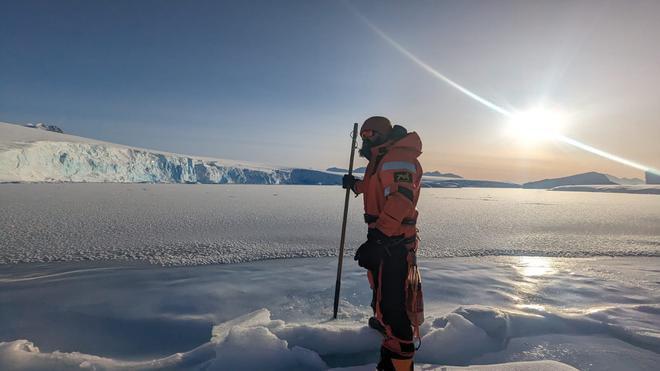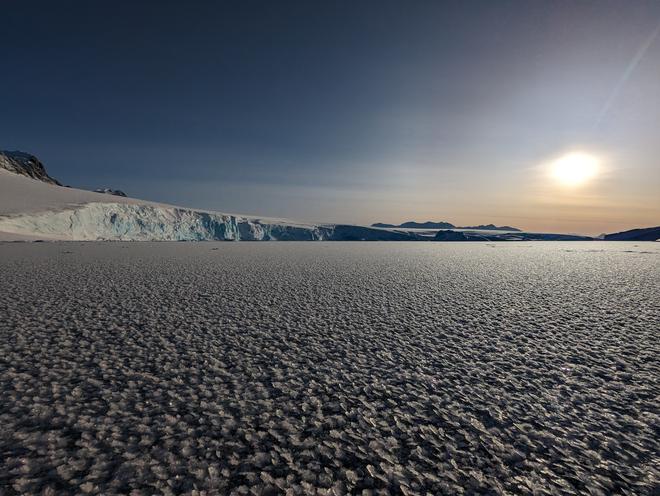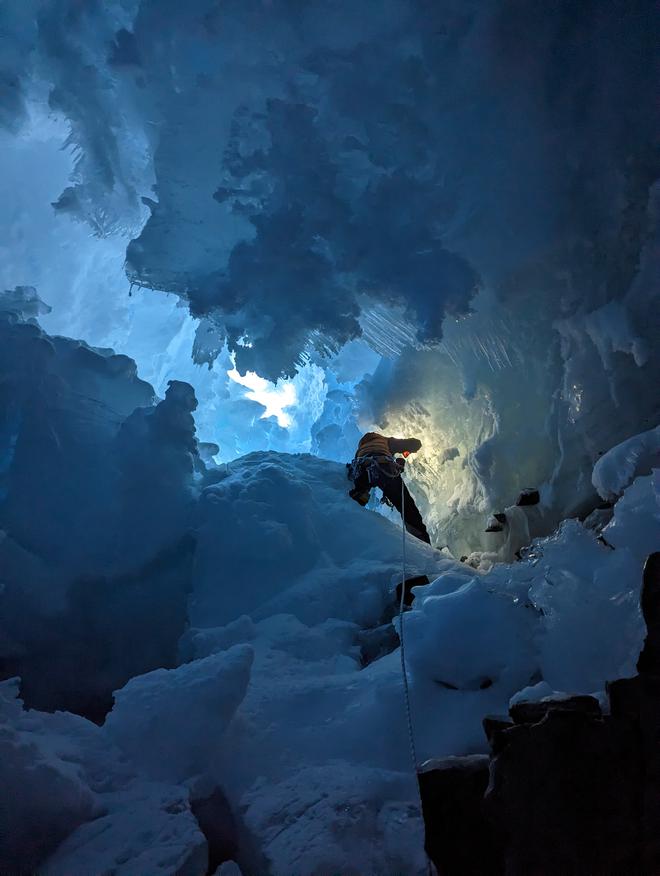It is unlike any workspace in the world. Each day starts off with frigid, record-low temperatures. In the Antarctic, everything depends on the weather.
“If the weather is good, we head out. Else, we stay in,” says polar researcher Vishnu Nandan, as he settles down reluctantly to the temperate climate of his hometown Thiruvananthapuram in Kerala, after a 40-hour flight from Antarctica. “It is not warm enough here,” he says. “Or maybe by now I have been so used to the cold that this isn’t warm enough,” he adds quickly, as an afterthought.
Vishnu has just returned from an eight-month odyssey in the Antarctic. He was one of the two scientists who were part of a 25-member team of the British Antarctic Survey, braving the extreme weather and the polar darkness at the Rothera Research Station on Adelaide Island, West Antarctica as part of a scientific survey. The research is part of a U.K.-based project called DEFIANT (Drivers and Effects of Fluctuations in sea Ice in the ANTarctic), which set up a ground-based radar system to take measurements of sea ice.
A research scientist at the University of Calgary and the University of Manitoba in Canada, Vishnu’s expertise lies in sea ice (frozen seawater that floats on the ocean surface). His work involves measuring the thickness of sea ice using the ground-based radar-based system and correcting the errors in the measurements of the same obtained from radar satellites. As part of the research, Vishnu, along with scientist Robbie Mallett, installed a U.S.-made instrument owned by the University of Manitoba on the sea ice to take the measurements.
“The thickness of the sea ice measured using satellite radars is prone to error. We cannot determine how thick the sea ice really is through this method because sea ice keeps drifting and it is not easy to keep track of its movement using satellites. Also, snow forms a layer over the ice. With the presence of snow, we could overestimate the thickness when measurements are taken using satellite radars. This is very crucial, because, we might be under the impression that the sea ice is thicker than it really is. This could impact the policies we come up with to tackle climate change,” says Vishnu.
Climate concern
The Antarctic can be challenging to conduct field measurements of sea ice, says Vishnu, explaining that the snow is very thick and deep. It floods the ice into the ocean and becomes slushy. “It is more salty, and is not homogeneous when compared to that in the Arctic. So there are combined errors from different sources,” he says. Of the eight months they spent in the Antarctic, he says the team could take readings on only 22 days. The rest of the days, there was no sea ice in the area where their ground-based radar system was mounted.

This year recorded the worst sea ice ever and the lowest since 1986, he says. The researchers found that the sea ice area is almost one million square kilometres less than the previous lowest which was in 1986, a real climate concern. “The maximum thickness of sea ice measured by us was 44 cm, which is low. It can ideally go up to 1.5 metres or more,” he says.
So why do we need the sea ice? “If you don’t have sea ice, a lot of the solar heat gets absorbed by the oceans, instead of being reflected by the sea ice. This will lead to the polar oceans getting warmer and other oceans also getting warmer, causing extreme weather scenarios. Further, the wildlife in the poles also needs sea ice to survive,” he says.
Vishnu says that climate change is very evident in the poles. The weather is not as cold as it used to be. This has been observed both in the Arctic and the Antarctic. It has also brought in a lot of challenges to do science. “I honestly hope that people value more about how climate and environment are changing and protect it in ways they can,” he says.


Ups and downs
He adds that life in the poles can be very rewarding. When not working, the team can go for climbing, diving into the ocean, and skiing or just contemplate life amid penguins and the Southern Lights. But the downsides can be equally stressful, with isolation and the cold taking a toll on one’s mental and physical health.
“I think isolation and loneliness are perhaps the biggest challenges when you are out in the poles. You are away from your friends and family and that takes a toll on you. I have seen people get injured, or their moods fluctuate. Teamwork is always a challenge here,” says Vishnu, who has spent 1,000-plus days altogether in the Arctic and the Antarctic.
“There is no sun for six months. I have become addicted to darkness, silence, and isolation. But that aside, I am very happy, humbled, and lucky to be able to do this as my profession. Every day is a new challenge and you have to think on your feet, adapt, and be flexible,” he says, adding with a chuckle, “And I have an office with a view.”







